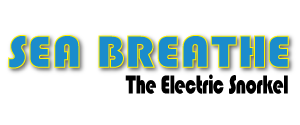
Training & Safety Tips
Sea Breathe is Ideal for Beginner Dive Training
Using the Sea Breathe is easy and fun, but with all diving there is risk and there is the right and wrong way to dive. Even though the depth (25 ft) that Sea Breathe will limit you too is not so deep as to require dive tables and decompression techniques we strongly recommend dive instruction from a certified dive instructor.
The main safety concern is air embolism, which can happen when the pressure inside the lungs is greater than the pressure outside. This situation can occur if, for example, a diver ascends without exhaling. It is very easy to avoid an air embolism, by constantly inhaling/exhaling. i.e., never hold your breath, particularly while ascending.
Ask at your local dive shop if a certified dive instructor could work with you on the relevant points of safety for shallow surface supplied air diving.
Dive instruction not only teaches the safety points but it will also instruct you on certain points that will make your diving easier and much more enjoyable. It could be on how to equalize your ears, remove the water from the mask, correct breathing technique to even an easier technique on swimming. We would call these fun points, they are helpful in ensuring that your enjoyment is kept at a maximum and is safely done.
Most certified dive instructing organizations (NAUI, PADI, SSI) offer courses that cater to Recreational Surface Supplied Air. Due to its safety and simplicity Surface Supply Diving is becoming increasingly popular and more agencies will be offering specific courses for surface air.
More recently there are also options for web based dive training by several organizations. If you search under "online scuba training" a number of options will pop up.
Apart from the safety aspect there are other important concepts you will learn in a good dive class, such as:
- Correct Breathing Technique
- Dealing with Mask Squeeze
- Clearing Water from your Mask
- Ascending and Descending
- Equalizing Air Pressure
- Emergency Ascent
- Buddy Diving
- Selection of Dive Sites, Weather and Current Conditions
- Emergency First Aid
- Plus many more....
As with all water sports, you should be a Confident and Competent swimmer and in a Good State of Health.
